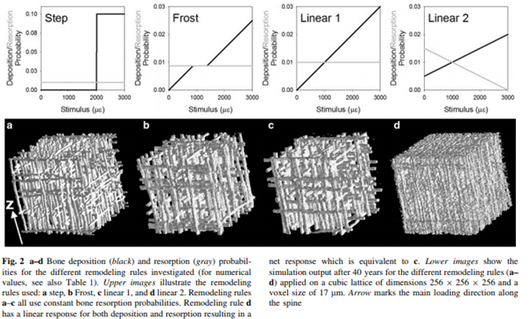New Suggestions for the Mechanical Control of Bone Remodeling
Abstract
Bone is constantly renewed over our lifetime through the process of bone (re)modeling. This process is important for bone to allow it to adapt to its mechanical environment and to repair damage from everyday life. Adaptation is thought to occur through the mechanosensitive response controlling the bone-forming and -resorbing cells. This report shows a way to extract quantitative information about the way remodeling is controlled using computer simulations. Bone resorption and deposition are described as two separate stochastic processes, during which a discrete bone packet is removed or deposited from the bone surface. The responses of the bone-forming and -resorbing cells to local mechanical stimuli are described by phenomenological remodeling rules. Our strategy was to test different remodeling rules and to evaluate the time evolution of the trabecular architecture in comparison to what is known from l-CT measurements of real bone. In particular, we tested the reaction of virtual bone to standard therapeutic strategies for the prevention of bone deterioration, i.e., physical activity and medications to reduce bone resorption. Insensitivity of the bone volume fraction to reductions in bone resorption was observed in the simulations only for a remodeling rule including an activation barrier for the mechanical stimulus above which bone deposition is switched on. This is in disagreement with the commonly used rules having a so-called lazy zone.






